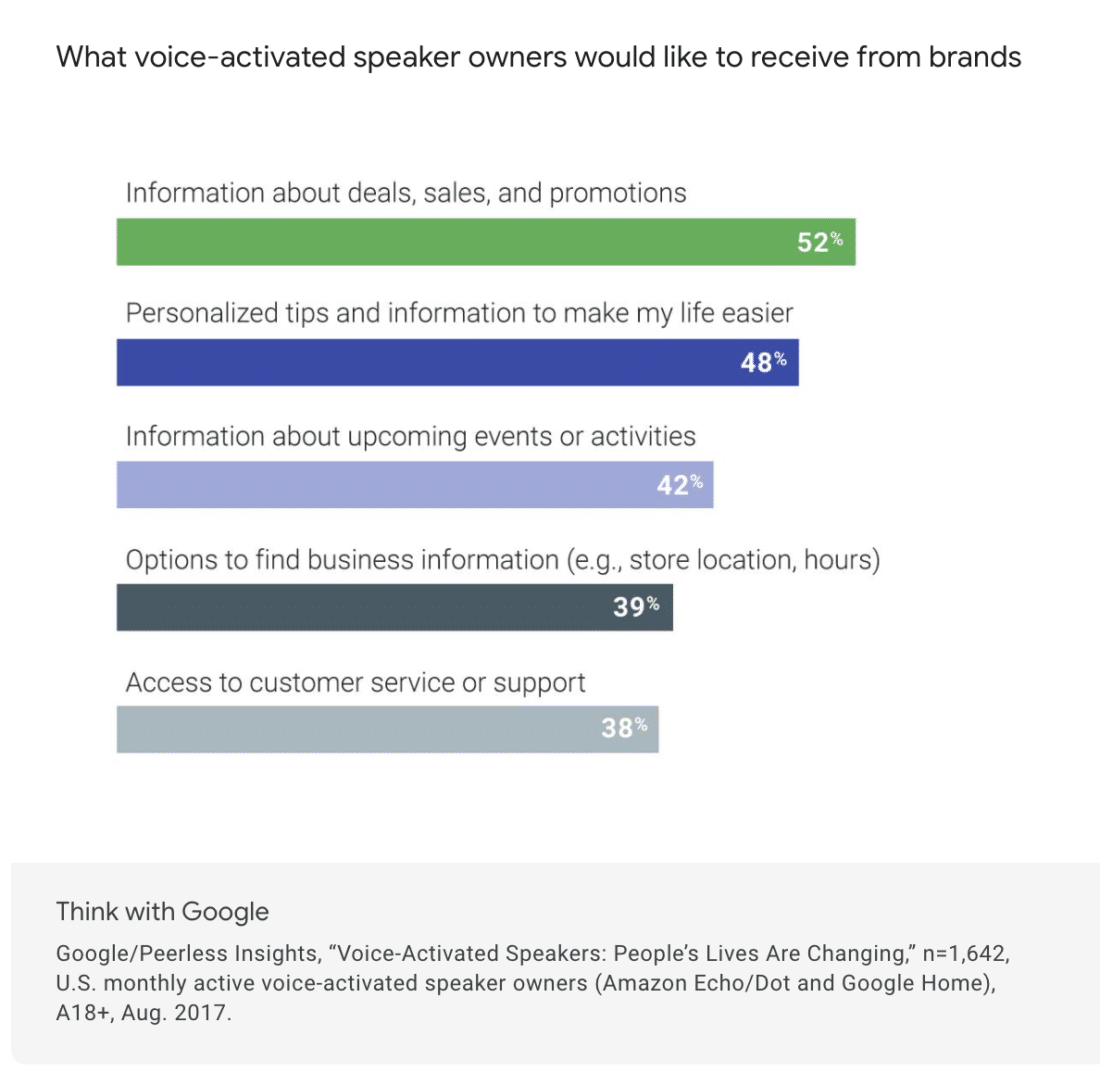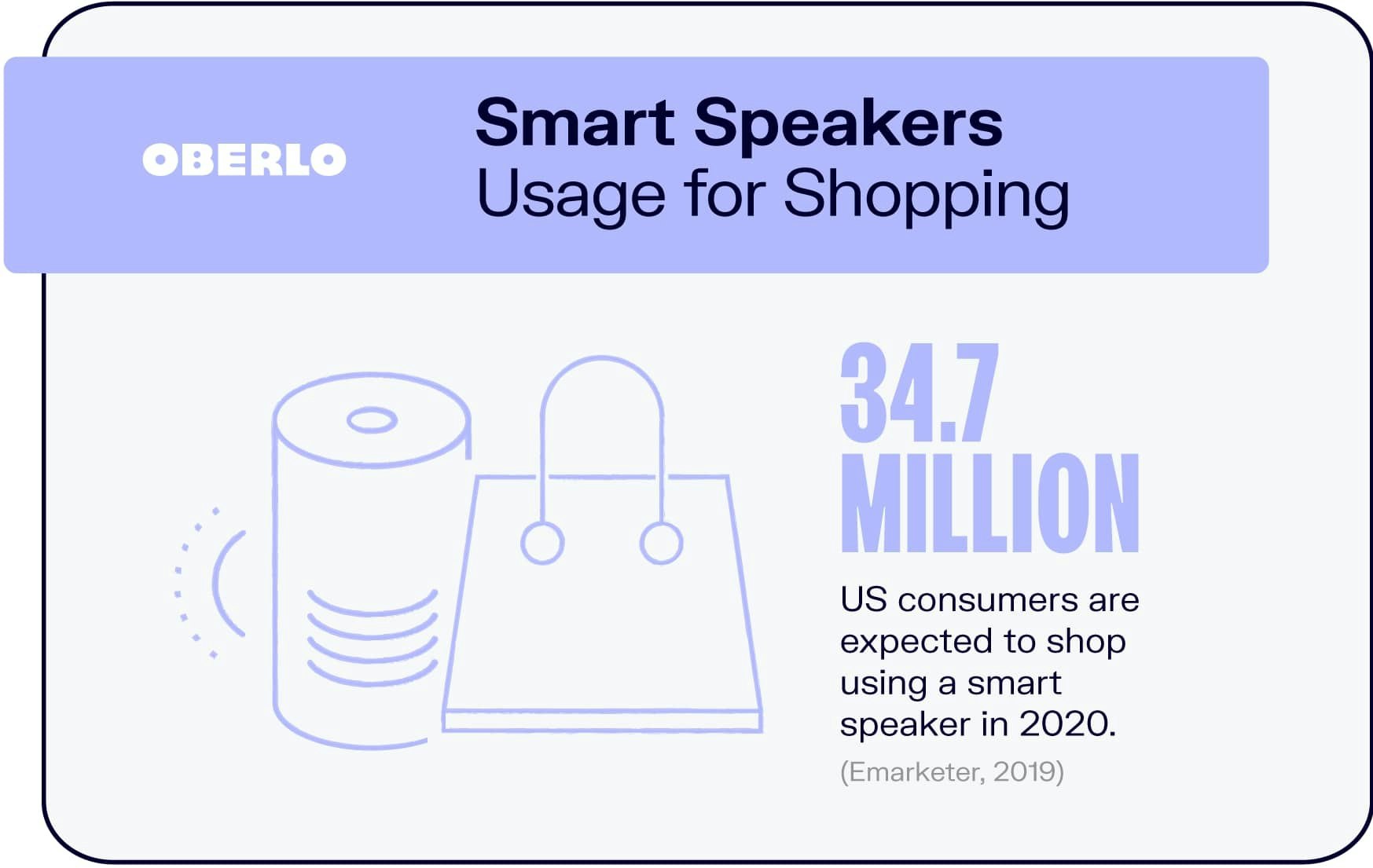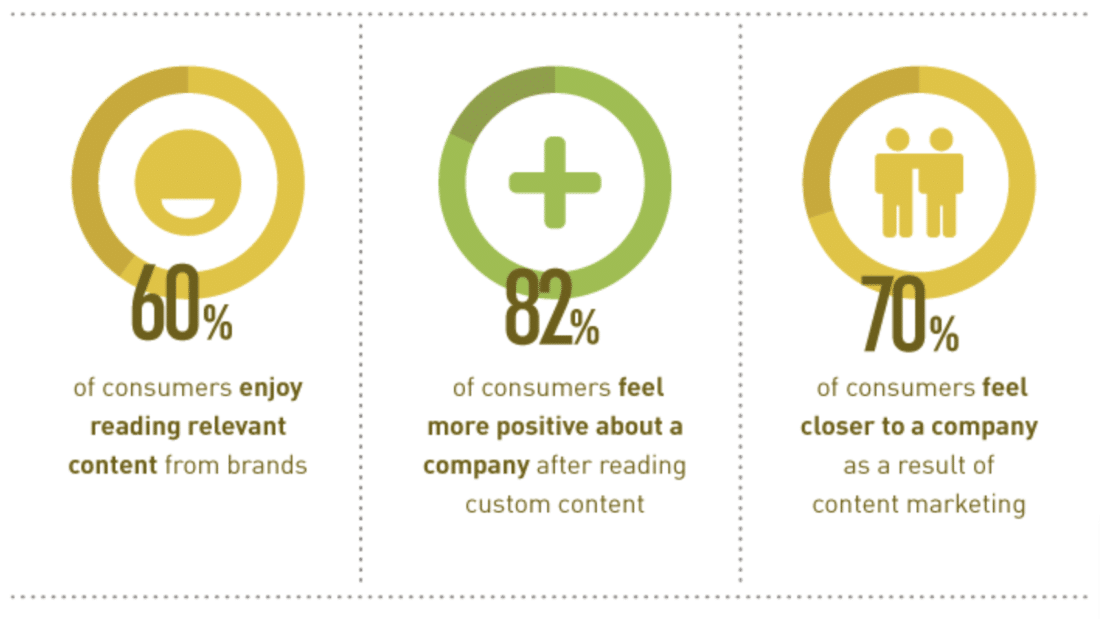Voice search is still (relatively) new, presenting a pretty significant challenge for businesses. Smart devices have their own set of best practices, their own distinct language and their own unique way of connecting with consumers. Understanding the nuances of smart search is critical, given that a growing number of people prefer talking to typing.
You can hardly go over to someone’s house these days without hearing Alexa’s disembodied voice dictating Spotify playlists. More than one in four adults in the U.S. owns a smart speaker, and it’s becoming increasingly easy—almost intuitive—to use voice search on a device rather than Googling the nearest Dunkin’ Donuts on your desktop or laptop.
In fact, an estimated half of all search queries are now conducted through voice search. More importantly for marketers, over half of consumers express interest in receiving information about deals and promotions, making voice an integral part of any solid marketing strategy. After requests for music, the second most popular use of smart speakers is asking questions.

Voice Sells
According to Voicebot.ai, voice e-commerce (also known as “conversation commerce” or vCommerce) represents the most significant revenue opportunity for businesses, which more than justifies investing time and resources into voice search. For instance, if a consumer is conducting thorough research on a specific topic, they probably won’t mind scrolling through countless pages of search results. Not so with smart-device owners. They ask a direct question; they want a quick answer. Marketers need to customize their smart search language accordingly.
That said, there’s a compelling need for consumer-specific personalized content when implementing voice search engine optimization. In order to gain optimal search results and top rankings, a customer-centric experience as it pertains to voice is imperative. Search engines increasingly rely on voice search when ranking pages, as it delivers results faster, positively impacting conversion rates.
Casual, conversational content is ideal; the average voice search result is 29 words, and the average length of a featured snippet is 45 words. You want to answer a simple question as best—and as fast—as possible. In fact, 41% of people who own smart speakers say they feel like they’re talking to a friend. (Assuming your friend is a 10 oz. device with a 90-day warranty.) For example, “Alexa, is it going to rain today? Do I need an umbrella?” is a more likely query for a smart device than “Austin weather.”
Localized search, meanwhile, is becoming more pervasive. Over half of consumers (58%) use voice search to find information about local businesses, putting them squarely on the purchasing path. The inclusion of so-called long-tail search terms can meet consumers at whatever stage they’re at in the buyer’s journey and where they are, literally. Someone who’s asking for the best athletic wear near them is probably ready to make a purchase or, at the very least, seek out your brand.
Shop Talk

Recent research from eMarketer finds that over 30 million people in the U.S. shop via smart devices, representing an increase of more than 30% from 2018. The actual number of U.S. consumers making purchases on their smart devices, however, is smaller than initially estimated. One reason could be the absence of screens on smart speakers, which may be why consumers tend to make purchases on iPhones and tablets instead.
Despite the lower estimate, eMarketer is still predicting that 10.8% of all digital consumers in the U.S. will end up making a purchase using a smart speaker. Everyday household items tend to be popular purchases, which is helpful if you’re Bounty paper towels; not so much if you’re a smaller business.
I’m With the Brand

If you’re in the early stages of mapping out your voice e-commerce strategy, there are a few things to consider. In the vCommerce environment, brand loyalty is paramount. But in order to build up brand loyalty, you first need to reach consumers in more traditional ways. And, as so many things do, this goes back to content.
A cross-platform content strategy is similar to omnichannel marketing, or a multichannel approach focused on the customer experience. What kind of overall user experience does your website offer? Is your mobile site updated? Are your email campaigns providing added value?
If you can reach your audience on more traditional platforms while gaining their trust, you can secure brand recognition first and loyalty next, thereby improving voice search results.





Join the conversation